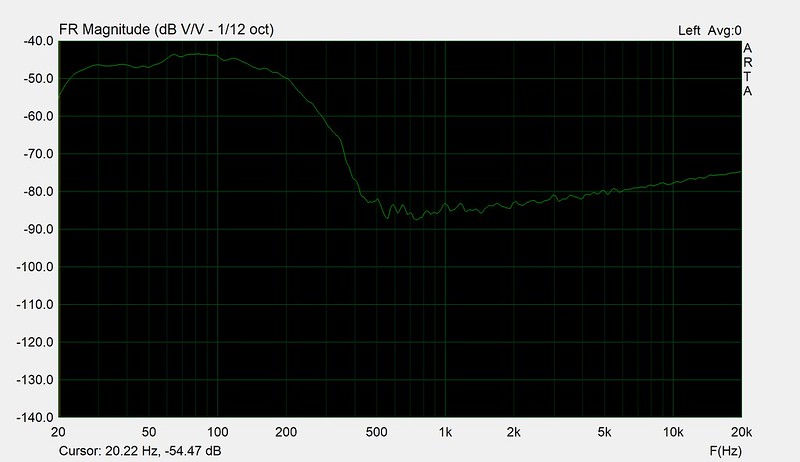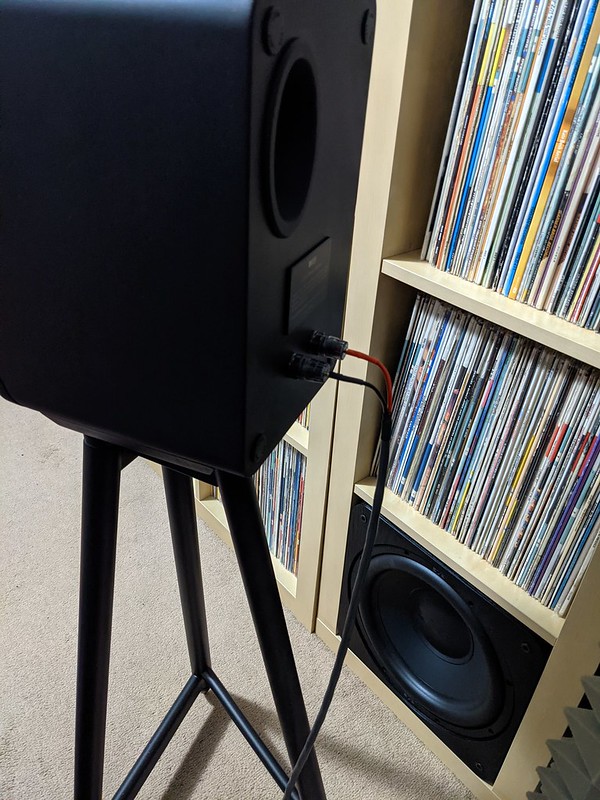Here we go then, graph overload

Just rough measurements to get some understanding of room behaviour. I've applied no filters or tuning.
First the LS50 measured from the listening seat L&R overlayed.
Standard, open ports:
 LS50 pair ported
LS50 pair ported by
Rob Holt, on Flickr
This surprised me as I didn't expect to see this much LF, though you can clearly see the primary 40Hz room mode lifting the response.
Sealed:
 LS50 pair sealed
LS50 pair sealed by
Rob Holt, on Flickr
Note the low end doesn't collapse it just shelves down - probably why the porting on these sounds better than usual.
This is the sub, wide open, no filters placed on the listening seat with the mic up against the grille:
 Raw sub no filter
Raw sub no filter by
Rob Holt, on Flickr
I like that - pretty much the raw response of the sub and nicely flat and extended.
Next up, the sub in the listening seat and the measurement at the speaker position:
 sub in seat mic at speaker
sub in seat mic at speaker by
Rob Holt, on Flickr
Not bad, hole at 50Hz which could be why I hear lack of bass oomph.
This next one is interesting, sub down on the floor next to the LS50:
 floor nest to main L
floor nest to main L by
Rob Holt, on Flickr
Could work with that, some PEQ would sort it, no major holes.
And finally, sub in the front corner of the room - Yuk!
 sub front corner
sub front corner by
Rob Holt, on Flickr
What will happen with a pair? - we'll soon see!


 LS50 pair ported
LS50 pair ported LS50 pair sealed
LS50 pair sealed Raw sub no filter
Raw sub no filter sub in seat mic at speaker
sub in seat mic at speaker floor nest to main L
floor nest to main L sub front corner
sub front corner right sub
right sub PXL_20210430_200011206
PXL_20210430_200011206 Room sub
Room sub room
room